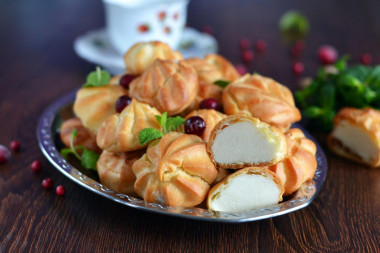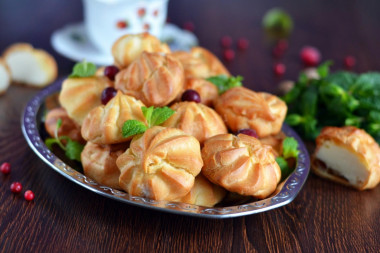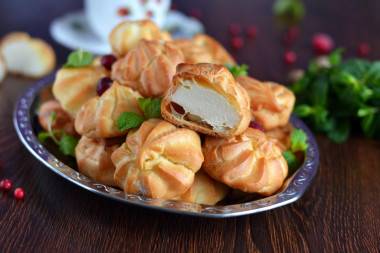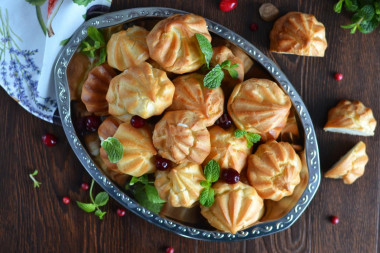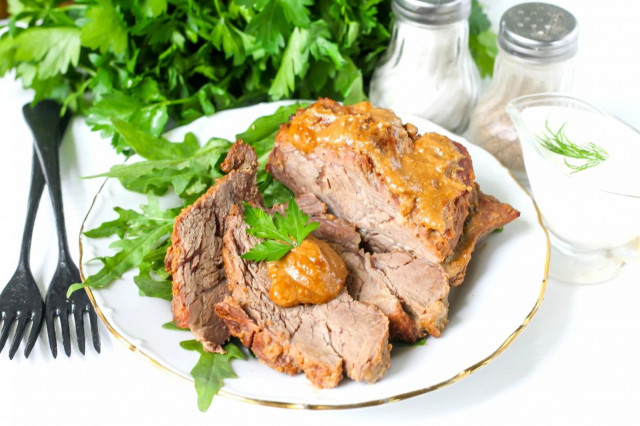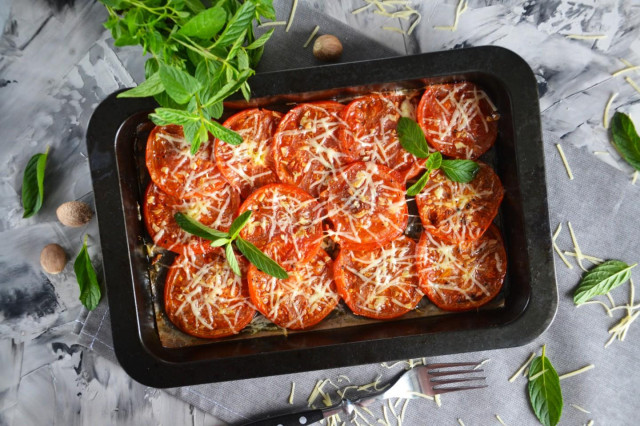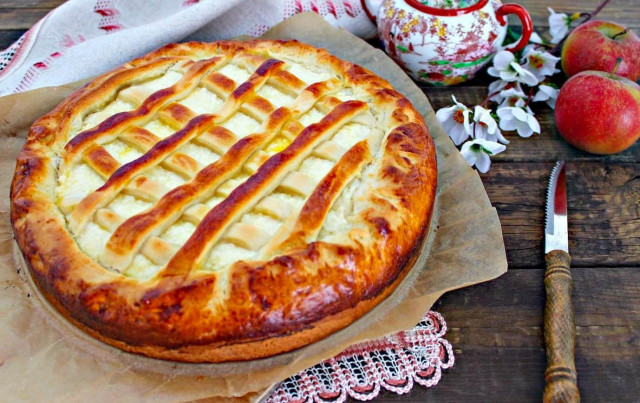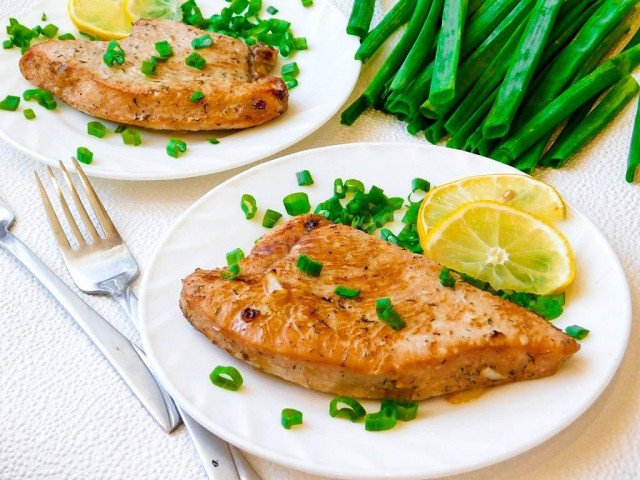Composition / ingredients
Step-by-step cooking
Step 1:
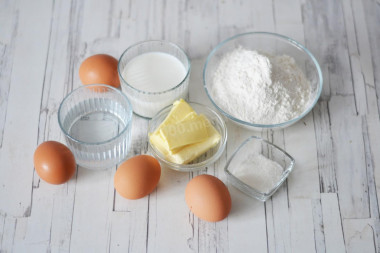
How to make custard profiteroles? First, prepare the dough. For products made of custard dough, it is advisable to use strong flour with a protein content of 12-13 g. Products made from such flour will keep their shape better. But if you have regular flour with a protein of 10.3 g, you can use it as well.
Step 2:

Combine water, milk and butter in a saucepan. Put on a small fire and bring to a boil, but do not boil.
Step 3:
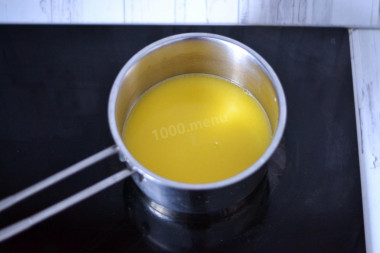
When steam starts to rise from the milk, add salt, sugar and mix until the crystals melt.
Step 4:
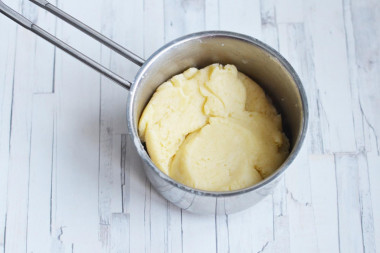
As soon as the mixture begins to boil, remove the saucepan from the heat, pour in the sifted flour and stir quickly with a spatula. The dough should gather into a lump and easily fall behind the walls of the saucepan. Cool the dough slightly.
Step 5:
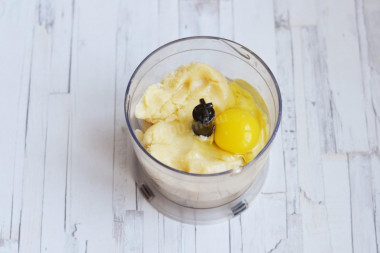
Add the eggs one at a time, stirring the dough in a blender or mixer at medium speed.
Step 6:

A viscous, slightly fluid homogeneous mass should be obtained.
Step 7:

Transfer the dough into a pastry bag with a "closed star" attachment.
Step 8:
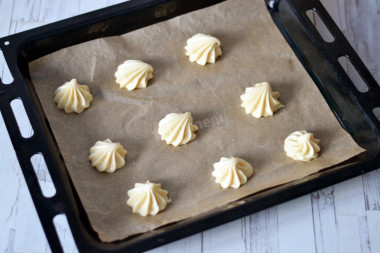
Place small stars on a baking sheet covered with parchment at a distance of 4-5 cm from each other. Bake profiteroles in preheated to 200°In the oven for 10 minutes and another 20-25 minutes at 180 ° C. Determine the exact baking time by your oven. Do not open the oven during baking, otherwise the products will fall off.
Step 9:
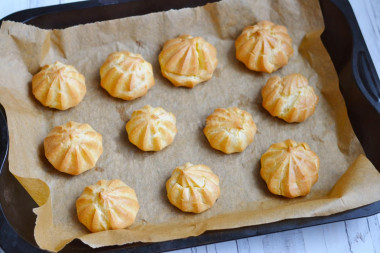
Cool the finished profiteroles in a switched-off oven with the door slightly ajar.
Step 10:
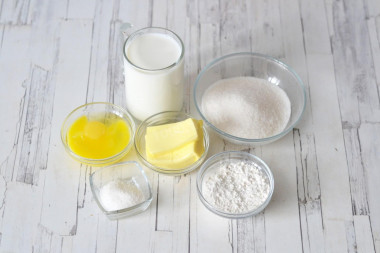
While the profiteroles are cooling, prepare the cream. Butter should be at room temperature, so take it out of the refrigerator in advance.
Step 11:
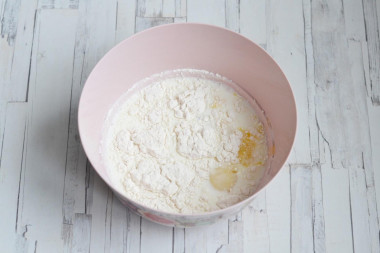
In a bowl, combine a glass of milk, eggs and flour and mix thoroughly.
Step 12:
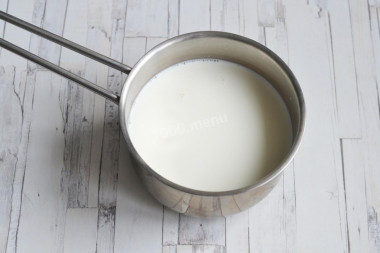
Separately boil the remaining milk with sugar and vanilla sugar.
Step 13:
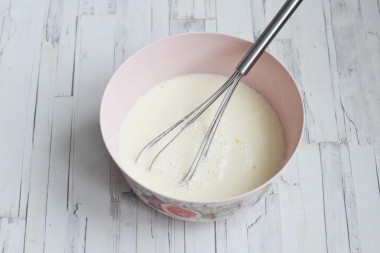
Pour hot milk into the egg-milk mixture in a thin stream, stirring constantly. If you pour the milk quickly, the eggs will curdle and flakes will appear on the surface.
Step 14:
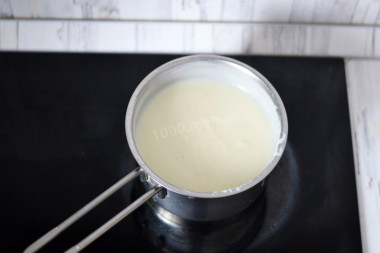
Pour the whole mixture back into the saucepan and put it on a small fire. Cook the cream, stirring constantly, for 10-15 minutes until thickened. The cream should be thick enough: the trace from the corolla should not be quickly tightened.
Step 15:

Cover the finished cream with a film "in contact" and cool to room temperature.
Step 16:

Add soft butter to the cooled custard and beat with a mixer until smooth.
Step 17:

IMPORTANT: The temperature of the custard should be either the same as that of the butter, or even lower. The warm cream will melt the butter and the cream will liquefy strongly.
Step 18:
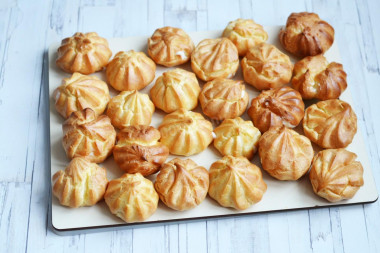
Fill the cooled profiteroles with custard using a cooking bag with a sharp small nozzle. It is better to keep profiteroles 1-2 hours in the refrigerator before serving. Enjoy your meal!
And if you also freeze the profiteroles a little in the freezer, then the cream will look like ice cream.
Be prepared for the fact that flour may need more or less than indicated in the recipe. Focus not on the amount of flour, but on the desired consistency of the dough. To avoid mistakes, read about flour and its properties!
Keep in mind that everyone's ovens are different. The temperature and cooking time may differ from those specified in the recipe. To make any baked dish successful, use useful information about the features of ovens !
Caloric content of the products possible in the composition of the dish
- Whole cow's milk - 68 kcal/100g
- Milk 3.5% fat content - 64 kcal/100g
- Milk 3.2% fat content - 60 kcal/100g
- Milk 1.5% fat content - 47 kcal/100g
- Concentrated milk 7.5% fat content - 140 kcal/100g
- Milk 2.5% fat content - 54 kcal/100g
- Chicken egg - 157 kcal/100g
- Egg white - 45 kcal/100g
- Egg powder - 542 kcal/100g
- Egg yolk - 352 kcal/100g
- Ostrich egg - 118 kcal/100g
- Whole durum wheat flour fortified - 333 kcal/100g
- Whole durum wheat flour, universal - 364 kcal/100g
- Flour krupchatka - 348 kcal/100g
- Flour - 325 kcal/100g
- Granulated sugar - 398 kcal/100g
- Sugar - 398 kcal/100g
- Butter 82% - 734 kcal/100g
- Amateur unsalted butter - 709 kcal/100g
- Unsalted peasant butter - 661 kcal/100g
- Peasant salted butter - 652 kcal/100g
- Melted butter - 869 kcal/100g
- Salt - 0 kcal/100g
- Water - 0 kcal/100g
- Vanilla sugar - 379 kcal/100g


